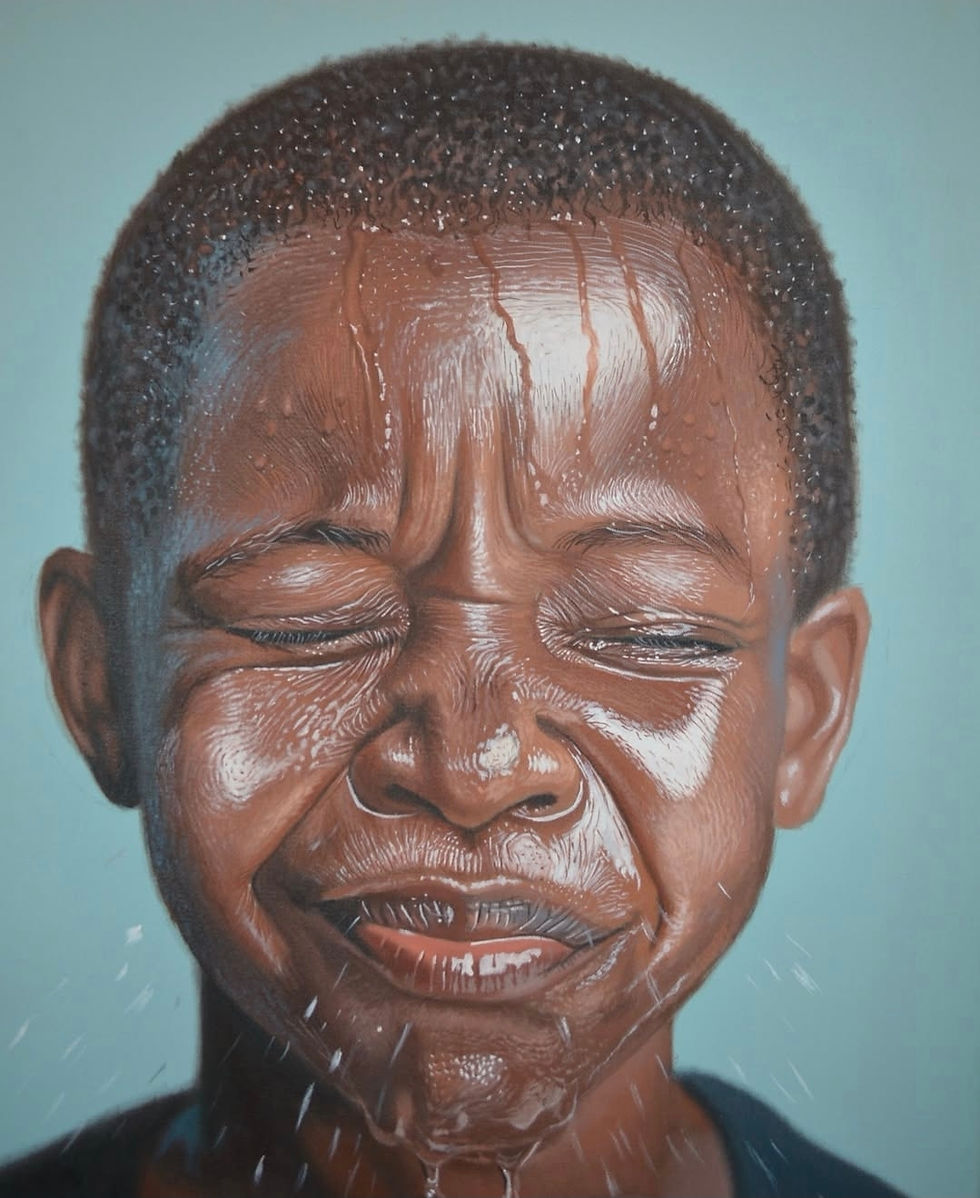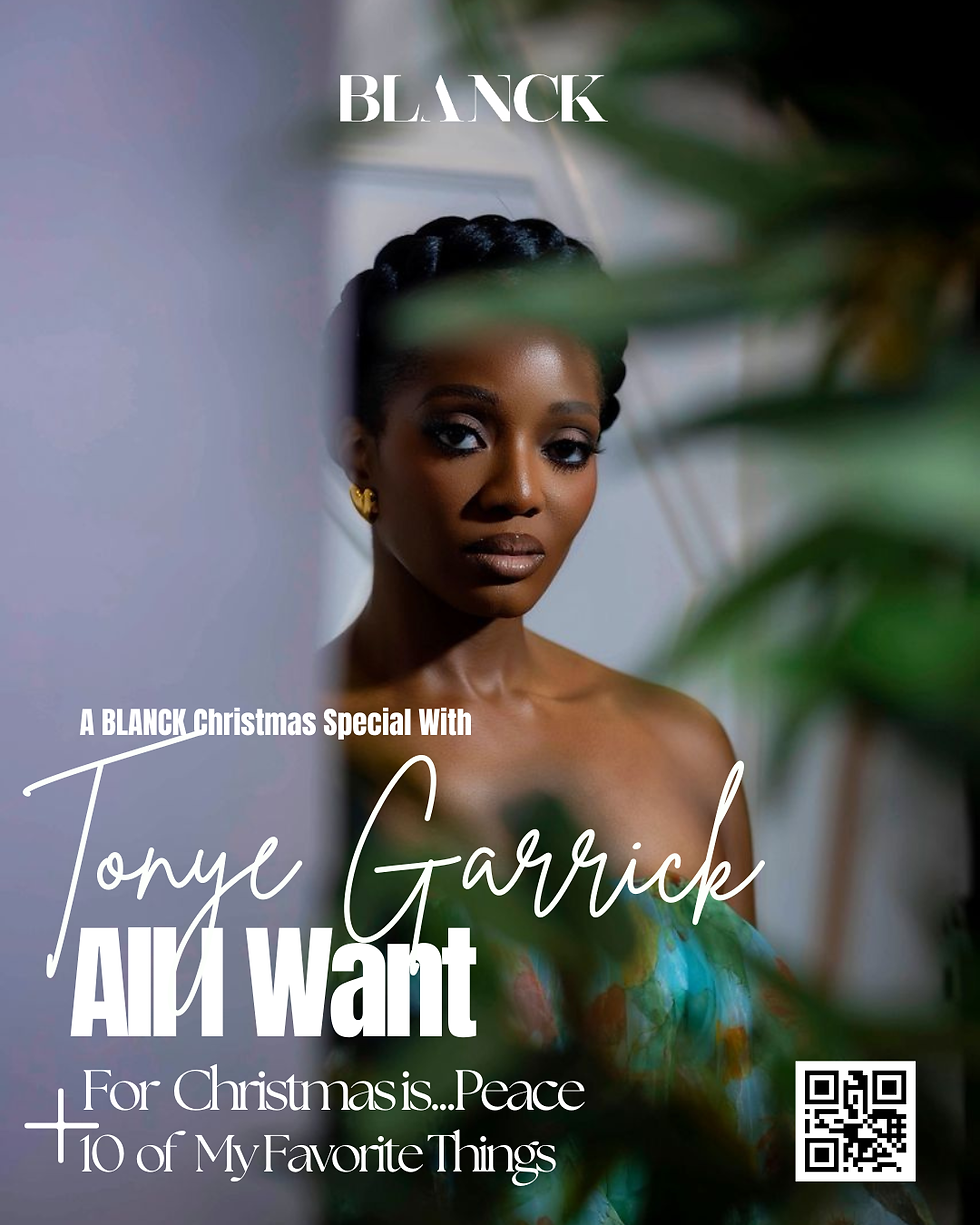Chasing the Emotional Undercurrent: An Interview with Kenyan Artist Eddy Ochieng
- frankachiedu
- Aug 29
- 5 min read
Updated: Sep 8
I stumbled on Eddy Ochieng’s art on Instagram and instantly fell in love. Interviewing him for Blanck Magazine felt like stepping onto very familiar paths. From rejection and near-abandonment of his craft to international recognition, Eddy’s journey proves that persistence paints louder than praise. His art is both protest and prayer: a mirror to the world we live in.

Franka Chiedu writes for Blanck Magazine.
Kenyan artist Eddy Ochieng creates work that hums with memory, faith, and persistence. In this interview, he speaks about the stories that shaped him, the resilience behind his practice, and why art should leave us with questions as much as answers.
Art that lingers often does so because it carries more than just color and form, it holds memory, history, and lived experience. For Eddy Ochieng, painting is not simply about what appears on the canvas, but about the undercurrents of belonging, faith, resilience, and the fleeting texture of human connection.
Born and raised in Kenya, Ochieng’s work is shaped by the layered contradictions of a country where tradition meets modernity and silence collides with noise. Storytelling whether whispered by a grandmother, embedded in a community, or hidden in plain sight has always been at the core of his creative voice. Recognition has followed, but at the heart of his practice lies persistence, an anchoring faith, and the pursuit of honesty.
Your work carries a strong emotional current and often reflects layered narratives. What personal or cultural moments have most shaped your artistic voice?
I think my artistic voice has really been shaped by the experience of my environment. I love interacting with people. I’m always curious to hear someone else’s approach to life what they’ve had to navigate and how they look at the future. It places me in a unique position of constantly learning.
Growing up in Kenya, I was surrounded by stories: some told openly, some passed down quietly, others hidden in plain sight. The feeling of community, movement, belonging or not quite belonging those moments stick with you. Watching people evolve, or just sitting with my grandmother listening to her stories, all of that seeps into the work. I’m always chasing that emotional undercurrent, trying to preserve something that might otherwise slip away.

Kenya has a vibrant and evolving art scene. How has the local landscape, both literal and artistic, influenced the way you create and think about your work?
Kenya is layered. You’ll be in Nairobi, dodging bodas and neon signs, and an hour later you’re in the middle of nowhere, surrounded by stillness and goats. That constant shift between chaos and calm, noise and silence, definitely shapes how I work.
I’m drawn to contrasts - the old and new, softness and strength, visibility and invisibility. The local art scene has also taught me a lot about persistence. There’s real talent here, and you can see the beauty of each artist raising their voice in a unique way. That diversity is a sight to marvel at. There’s also a sense of pride I feel whenever I travel and see a Kenyan artist’s work exhibited. It keeps me grounded and motivated.

You’ve received recognition and awards for your work. How do you balance staying grounded in your creative truth while responding to public and critical acclaim?
It’s something I’m constantly learning to navigate. Recognition is encouraging - it shows that the work is reaching people, which I really appreciate. But I try not to let that become the reason I create.
The most meaningful work always comes from a place that feels honest, even if it’s unclear or uncomfortable. I often remind myself why I began in the first place: to help start a conversation about us, who we are, where we’re from, and where we should be going as a human race. When I stay close to that intention, everything else becomes background.
Can you recall a moment in your journey when you almost gave up and what pulled you back to the canvas?
Yes, there’ve been a few. I remember one in particular after a group show didn’t go the way I’d hoped. This was also after a very long stretch of rejections on applications, zero sales, and discouraging feedback from people. I felt invisible, like the work just didn’t matter.
Although there wasn’t much coming out of my input, I kept creating, because I’m an optimist, a virtue I gathered from my Christian upbringing. The hope that better days are ahead kept me moving, and I used social media to showcase my work. Slowly, it started reaching people.
I realised I’d missed the process more than the result. That moment reminded me that sometimes just showing up for yourself is enough. I came to appreciate that the highs and lows are equally important in this process.

Your pieces often feel like visual poetry. Do other art forms music, literature, or even politics influence the way you approach your practice?
Yes, absolutely. Other art forms constantly feed into how I create. I listen to music a lot while I work, especially Christian music. My faith is very much part of my practice. I grew up in a Christian home, and that foundation still shapes how I see the world. Worship music helps me settle into a reflective space.
Literature also plays a role. I’m intrigued by how writers and poets can paint vivid scenes with just a few words. That kind of restraint the ability to say so much with so little has taught me a lot. It influences how I think about space, color, and form. In a way, I try to do the same visually: to spark something in the viewer without saying everything out loud.
And politics, of course, has an impact. It affects all of us, whether we want it to or not. Our social lives, our work, our families, everything is intertwined with the political environment. I feel a responsibility to mirror what’s happening around me, sometimes directly and sometimes more quietly.
If someone were standing in front of one of your works for the first time, what do you hope they feel, question, or carry with them afterwards?
I hope they pause, even just for a moment. I hope something in the work feels familiar, even if they can’t name it. Maybe it reminds them of a memory, or makes them wonder about someone else’s.
The best art doesn’t give all the answers it invites you into a conversation, even a quiet one. If someone walks away carrying a feeling they didn’t expect, or a question they can’t shake, then the piece has done its work.
my artistic voice has really been shaped by the experience of my environment. I love interacting with people. I’m always curious to hear someone else’s approach to life what they’ve had to navigate and how they look at the future. It places me in a unique position of constantly learning.

In listening to Eddy Ochieng, it becomes clear that his work is not simply about aesthetic pursuit but about survival, memory, and connection. Each piece is both an act of preservation and a gesture of hope, capturing fragments of culture, faith, and lived experience before they dissolve into silence.
Grounded by resilience and guided by an unshakable sense of purpose, Ochieng reminds us that art is not only to be looked at, but to be felt, questioned, and carried into our own stories.

Eddy is recently showcased his brilliant works at the BUTTER event in Indianapolis.
Follow Eddy Ochieng on Instagram @eddybeuer and @blanckdigital for more brilliant works and update
All photos and videos used in this feature were provided by Eddy Ochieng or Culled from his official Instagram account. Please do not reproduce without prior permission
.png)







Comments